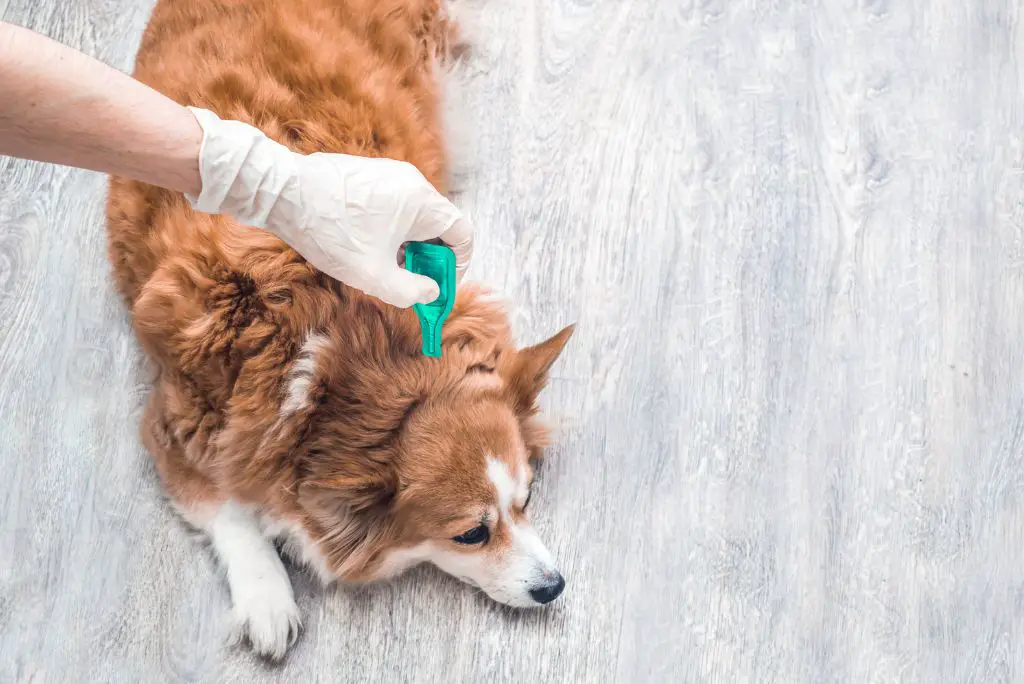An internal parasite is a living organism that lodges inside another organism, getting nutrients from it to grow and multiply in a way that directly or indirectly harms its host. Internal parasites in dogs often have the form of worms. Thinking about a worm living inside your dog and harming it is not the most enjoyable thing a dog owner wants to do, however, the best way to protect your dog from these pesky parasites, is by understanding the symptoms, risks, and learning how to prevent them from getting into your dog in the first place.
Being aware of general warning signs that your dog may have worms will allow you to get rid of them earlier, reducing any health risks and stopping them from spreading throughout your community. That’s because when untreated, these worms can spread through external parasites such as fleas or mosquitoes or through dog stool and contaminated soil, infecting other dogs and, in some cases, even people.
Each type of parasite will affect dogs in a unique way. However, there are some general warning signs to look out for that might indicate the presence of an internal parasite. These may include diarrhea, weight loss, vomiting, abdominal pain, dull coat, lethargy, dehydration, blood in the dog’s poo, and anemia. This post will help you understand what the most common types of internal parasites in dogs are, how they spread, and what symptoms you should look out for.
Article contents
1. Roundworms
Roundworms can spread directly from dog to dog through the ingestion of eggs that are present in the feces of an infected dog. There are two types of roundworms that can affect dogs: Toxocara canis and Toxascaris leonina. The first one is more common in young pups and can also be transmitted to humans. When a puppy is infected by a substantial number of roundworms, these worms can prevent the puppy from growing since they’re “stealing” the nutrients that the puppy needs to grow.
They can also cause serious digestive problems, resulting in an excessive gas formation that builds up in a puppy’s intestine. This will result in a puppy having a ‘pot-bellied’ appearance. The best way to prevent the spreading of this parasite is by not allowing your dog to eat other dogs’ feces and, especially, cleaning up after your dog straight away.

2. Heartworms
Heartworms need an intermediate host to spread such as mosquitoes. When feeding on a dog, an infected mosquito can inject heartworm larvae into its bloodstream. After that, the larva matures and travels to the dog’s heart taking up its space in major vessels of the heart and lungs, primarily in the right ventricle of the heart. A dog that is infected by heartworms will show signs such as fatigue, coughing, and overall poor physical condition.
Since these internal parasites are transmitted through mosquitoes and they’re impossible to avoid in most places, the best prevention is by using mosquito repellent collars and doing regular internal deworming.
3. Tapeworms
Like heartworms, tapeworms also need an intermediate host and don’t spread directly from dog to dog. A dog can get tapeworms by eating infected fleas. After that, the tapeworm eggs hatch and travel through the dog’s digestive system in order to attach to the intestinal lining. There are no obvious signs of tapeworm infection besides some segments showing up in a dog’s poo, resembling small pieces of rice. Some dogs may also feel itchiness in their bottom which can lead them to rub or scoot along the ground.
To prevent your dog from being infected with tapeworms, the best way is to really bet on flea control and regular internal dewormings.
4. Hookworms
Hookworms are spread through the ingestion of eggs and can also affect humans. These eggs come from an infected dog’s feces and can live in the ground for as long as several months. Dogs get hookworms when they eat infected dirt or even when grooming their paws or drinking contaminated water. The larvae can also get attached to the skin of unsuspecting dogs that lie on contaminated soil and penetrate it, entering the bloodstream.
Hookworms are very small but are able to ingest enormous amounts of blood when attached to a dog’s intestinal wall. Because they’re able to suck such enormous amounts of blood, they can cause anemia and even be fatal in puppies when left untreated. To prevent hookworm infection, it’s important that every dog owner cleans up after their dog as soon as possible and that you provide your dog with regular deworming treatment.

5. Whipworms
Like most internal parasites mentioned throughout this blog post, whipworms also spread through the ingestion of eggs that can be found in infected substances such as soil, food, water, and feces. These eggs can survive outside a host for up to five years if it’s in a warm and moist environment. Whipworm infection won’t cause major symptoms in mild cases. However, in severe cases of infection, it can lead to inflammation, diarrhea, weight loss, and anemia. Like other internal parasites in dogs that spread through ingestion of the eggs, the best way to prevent it is by cleaning up after your dog immediately for general sanitation and health.
Making sense of it all
To keep these common internal parasites in dogs at bay, the best course of action is by betting on prevention. Cleaning up after your dog, flea control, and regular deworming treatments are the best ways to ensure your dog doesn’t get infected with any of these annoying little beasts or, if it does, you can get rid of them quickly in order not to harm your dog’s health.
Ask your vet what the most appropriate parasite control program for your dog and the environment you’re in because different environments can be more susceptible to different parasites. If you notice any of the symptoms described above, immediately take your dog to the vet and, if possible, take a stool sample with you so your vet can look for parasite eggs and provide a clearer diagnosis.
